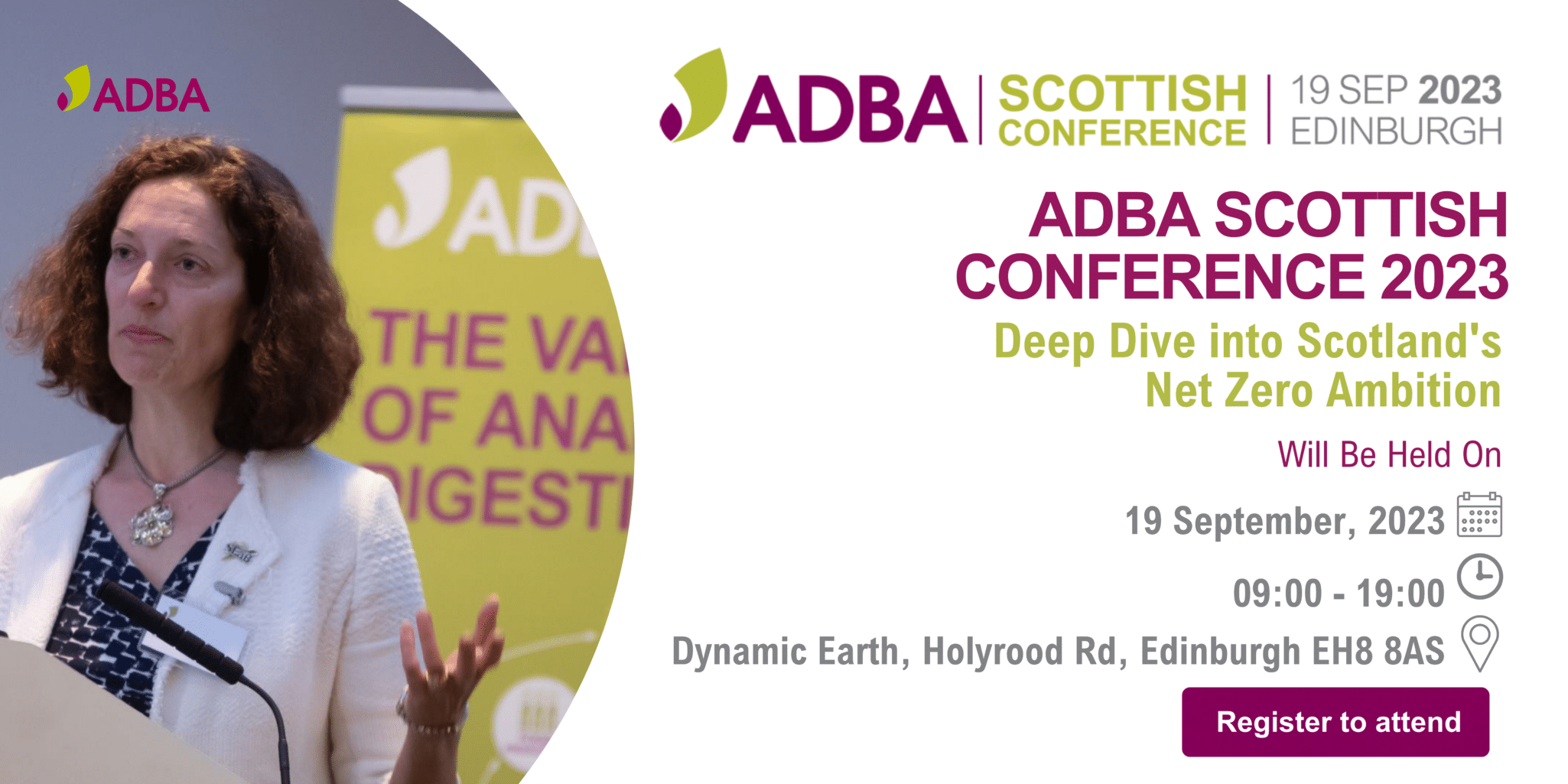The UK anaerobic digestion industry is navigating a rapidly evolving landscape, shaped by pivotal policy…
DESNZ publishes the Biomass Strategy – What does it mean for AD
On 10th August, the Department for Energy Security and Net Zero (DESNZ) published a long-awaited Biomass Strategy, laying out a comprehensive vision for utilising biomass in achieving the UK’s legally-binding net-zero targets.
Biomass, encompassing organic materials like crops, wastes, and residues, emerges as a versatile resource across various sectors. The strategy reaffirms the government’s commitment to biomass sustainability, proposing advanced sustainability criteria and a cross-sectoral framework. By examining biomass availability, the strategy underscores the significance of both domestic and imported sources. Priority use of biomass in challenging sectors is further emphasised in the Strategy, supported by incentives and future transitions toward advanced technologies like Bioenergy with Carbon Capture and Storage (BECCS).
The UK Government has been uniquely slow – by comparison with both the United States and the European Union – to encourage biogas, now included in the Biomass strategy, as part of the energy transition. This is a welcome if belated recognition of the priority uses to meet net zero, but more targeted support is needed to unlock the potential of key biogas feedstocks. Manures, slurries and agricultural residues are the biggest areas of growth for the biogas industry, but the potential will be untapped without ministerial heft and push.
ADBA Chairman, Chris Huhne says welcoming the Strategy
The Biomass Strategy’s focus on sustainability and resource availability is crucial for the anaerobic digestion (AD) sector. As a key player in utilising organic waste and residues, AD can benefit from increased biomass supply and reduced costs. The emphasis on sustainable feedstocks aligns with the sector’s goals of efficient waste management and renewable energy production. The sector’s growth can be further boosted through collaboration with government initiatives and integration into the broader bioeconomy, potentially creating a circular model that aligns with the strategy’s objectives.
Biomass Sustainability
The strategy highlights the government’s history of promoting biomass across energy sectors with stringent sustainability criteria. Future actions are proposed to fortify these criteria, reflecting evolving sustainability concepts. The Strategy commits to developing and implementing a cross-sectoral common sustainability framework upon stakeholder consultation, which ADBA is keeping an eye out for.
Biomass Availability
The strategy acknowledges the complexity of predicting biomass availability, given its diverse sources and uncertainties. Domestic and imported sustainable biomass are identified as essential contributors to achieving net zero goals. Collaboration among government, businesses, and biomass producers is encouraged to enhance biomass supply.
The AD sector is well-positioned to benefit from increased biomass availability. The strategy’s call for collaboration aligns with the sector’s potential to transform organic waste into valuable energy and resources. By partnering with biomass producers and businesses, AD facilities can secure a stable supply of feedstocks, promoting growth and aligning with the strategy’s objectives.
Priority Use of Biomass
Given the limited nature of sustainable biomass, the strategy advocates prioritising its use in sectors where it offers the greatest benefits. Biomass uses that enable carbon capture and storage should be prioritised to support net-zero goals as it can play a major role in decarbonising hard-to-decarbonise sectors with limited alternatives.
- In the short term, the UK will continue incentives for biomass in power, heat and transport.
- In the medium term (to 2035), biomass will further support carbon budget 6 goals, transitioning away from unabated uses towards BECCS where possible.
- Modelling indicates biomass + BECCS will contribute significantly to net zero targets in the long term by creating negative emissions.
The strategy indicates a continuing role for biomass in the medium term to support sectors like heat and power. This is positive for anaerobic digestion, which can process biomass waste streams into renewable biogas. However, the long-term focus on BECCS could limit growth potential unless anaerobic digestion facilities adopt carbon capture technologies. Overall, anaerobic digestion is likely to remain a contributor to UK renewable energy in the medium term, but its long-term prospects will depend on the viability of adding carbon capture capabilities.
Bioenergy, Carbon Capture and Storage (BECCS)
The Biomass Strategy recognises BECCS as a significant technology for capturing and storing CO2 while generating low-carbon energy. The strategy further acknowledges the global presence of BECCS and its potential to deliver negative emissions while highlighting the government efforts to support BECCS development across the UK.
Alongside the Strategy, the government has published a report led by the DESNZ Chief Scientific Adviser’s Task and Finish Group which sought to establish an evidence-based position on the validity of BECCS as a Greenhouse Gas Removal (GGR) option to deliver negative emissions.
The report sets out how “well-regulated” BECCS can achieve its objective to deliver negative emissions and ensure positive outcomes for people, the environment, and the climate.
Our analysts have prepared a brief on this report, which you can access here.
Biomass is already a key component of our energy supply, with bioenergy generating 11% of total electricity supply in 2022. But its future potential is extraordinary: it is a renewable source that can be used across all three energy sectors (transport; heat; and electricity), as well as non-energy sectors. It can deliver low carbon energy, displace fossil fuel use in materials, and produce negative emissions when combined with carbon capture and storage.
Graham Stuart, Minister of State for DESNZ
Biomass Uses Across the Economy
The strategy underscores the pivotal role of biomass in renewable electricity generation, biomethane production, heating solutions, low-carbon transport fuels, industrial decarbonisation, and even the emerging bioeconomy. Biomethane is recognised as a circular economy driver through anaerobic digestion processes, and the broader potential of biomass-derived products is highlighted.
The strategy’s recognition of biomethane’s role in energy security and circular economy aligns directly with the anaerobic digestion sector’s objectives. As a contributor to biomethane production, the sector can actively participate in decarbonising multiple sectors. By integrating into the broader bioeconomy, the sector can explore new avenues for waste-to-resource conversion, aligning with the strategy’s vision.
In conclusion, the Biomass Strategy offers a comprehensive roadmap for leveraging biomass to achieve net zero targets. Its impact on the anaerobic digestion sector is substantial, paving the way for increased sustainability, collaboration, and growth. As biomass continues to evolve as a crucial resource, the sector’s alignment with the strategy’s principles positions it as a vital player in the transition to a greener future.
Biomass Strategy Briefing Note
Our analyst team has prepared a comprehensive briefing note that will give you an overview of the contents of the Biomass Strategy. You can download the note below.
If you have any questions or would like to chat about how the Strategy will impact your business or the AD industry as a whole, please email Wasundara.Doradeniya@adbioresources.org.
Note: AD- and biomethane-related sections in the briefing note are highlighted in grey italicised font.
BRIEFING NOTE - Biomass Strategy - 10.08.2023


